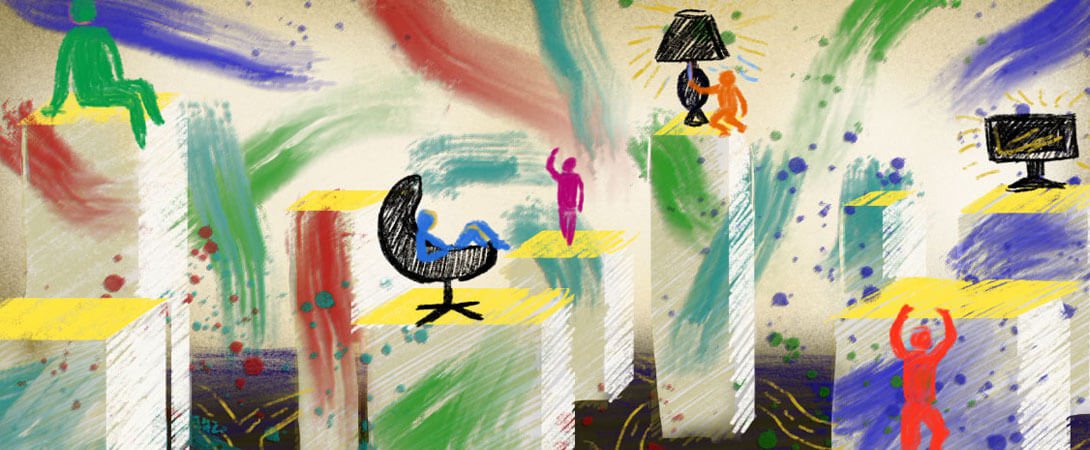AI and analytics: Please improve my experience
19.02.2020 | Tom Haak

Time to replace your battery
At my home I have an alarm system. Sometimes a battery in one of the components needs to be replaced. I get a text message (WhatsApp) from the company, and via a link in the message I can order a new battery (or, for a higher price) ask a mechanic to come along and do it for me. So far so good. The battery is received and after a couple a weeks delaying this task, I replace the battery (always in time, I know they warn me weeks ahead of a possible component failure). The security company does not like this. On the second day after I have received the battery, they start chasing me via WhatsApp. “It is time to replace your battery!”. “Please replace your battery!”. I have been a client of this company for over 20 years. I always replace the battery. Why don’t they know by now there is no need to chase me? If their system was only a little bit intelligent it could be more adaptive. The chasing frequency (and maybe also the chasing tone) could be adapted to the characteristics of the client.
HR processes can irritate people
Many HR systems are stubborn. Most systems are programmed with workflows derived from HR processes (preferably globally standardised processes). The workflow “Performance Management” requires the manager to set goals with the members of her team before January 31. The system starts sending the manager messages in December. “Do you want me to plan your annual goal setting conversations?”. If by mid-January the manager has not planned the conversations, nor completed the pre-conversation goal setting forms, the machine starts to worry. Reminders are sent, the manager of the manager is informed and finally the manager is not able to start her computer if she does not plan the meetings.
You can imagine this causes irritation (Read: “How can HR give time back to the organisation?“). This manager always has the necessary conversations, and her employees have given very positive feedback about her management style. She is a little bit a last-minute person, so generally she plans the meetings end January, maybe early February. She has done this for years. The system should know by now and leave her alone. She does not need chasing.
We need clever adaptive systems
The promises of AI and (people) analytics are high. Our experience in the workplace will be a lot better, efficiency will increase, and we will unleash the potential of our talent. I hope the technology can live upon to the expectations.
Here I some of the things on my wish list. I am sure there are existing solutions that can make some of my wishes come true. Please let me know!
The targeted pulse survey
More and more organisations are introducing regular pulse surveys (Read: “Latest trends in employee mood measurement“). Some surveys are adaptive in the questions they ask. If you are happy about a certain issue, the next question is asked. If you are less positive, some follow up questions are asked.
It must be able to detect the best sensors in an organisation, the people that best sense the opinion of a team or department. If you combine this with “survey discipline” (high = answers every survey), you might only have to ask a very limited set of people their opinion, instead of bothering everyone. Some surveys you can send to everybody, to make sure everybody can be involved.
The applicant selector
I see 50+ applicants per year. It must be possible to find out what the characteristics are of applicants with whom I have a good fit (or report).
The boss matcher
Some people fit better with a certain boss than other. Can you please use your analysis to find out who will fit in my team? As the employee-boss interaction is an important driver for engagement, I would expect more effort to make the best possible matches.
The team builder Building winning teams is not easy, and hopefully technology can help. Most tools I have seen are not very effective, and the focus is on creating the best skill mix.
"With more data about effective teams I would expect (and hope) to see more effective team builders."
The adaptive communicator
Our national airline KLM gives me a choice on how they will communicate with me. Do I prefer e-mail, WhatsApp or Twitter? In most organisations there is no choice. E-mail is still used a lot, with channels like Yammer and Slack. It should be possible to find out which channel works best with what kind of employees, even without asking. If you use people’s preferred channels (might differ per type of message), the chance that the message is received increases. You can also vary the tone and structure of the message, by taking the personality of the receiver into account (use Crystal, for example, and Textio).
Read: 5 internal communications trends for 2019
Give-me-salary-when-I-need-it
Most people who have a salary, receive it at the end of the month, or bi-weekly in some countries. It should be possible (with consent of course) to get some insight in the spending pattern of employees and create a better fit between spending pattern and salary payments (without increasing the salary). Some people might like this.
Irritating colleague alert
Organisational Network Analysis (ONA) is evolving. Real practical applications are still limited. I would like an application that gives me an alert (preferably gentle vibration of my Apple watch) when one my irritating colleagues enters the building or enters a predefined zone. Could be Boss or spouse alert as well, of course
This is just the beginning of a list.
My request:
put a lot more effort into enhancing the life of workers and managers in organisations, instead of pleasing senior management and HR. People analytics for the people!


